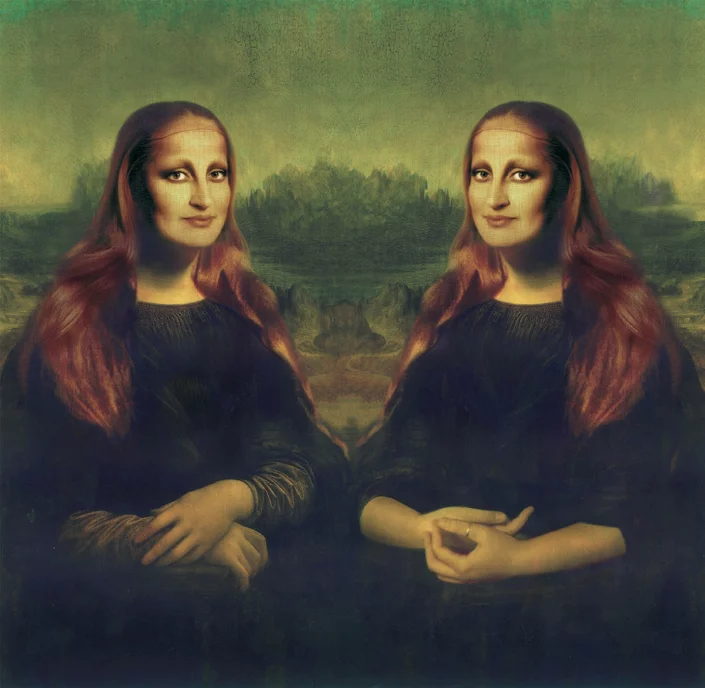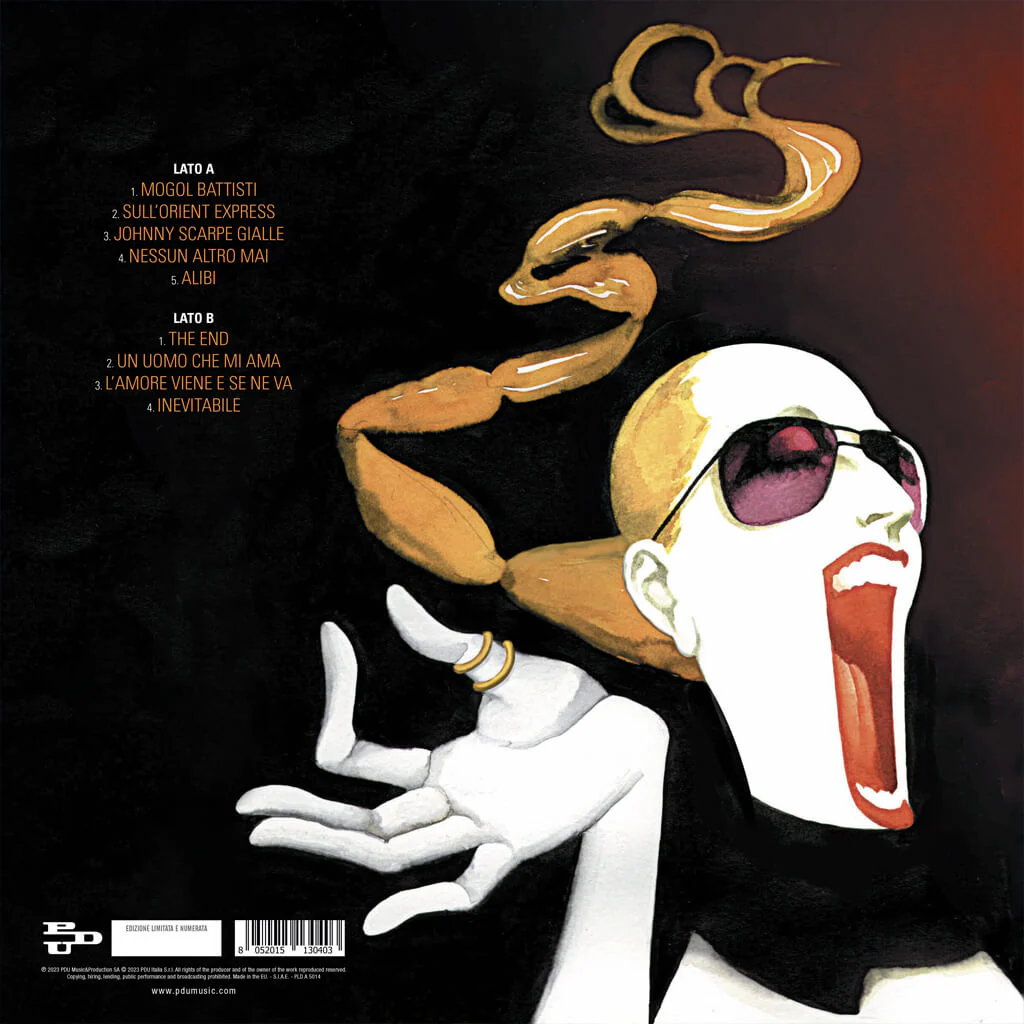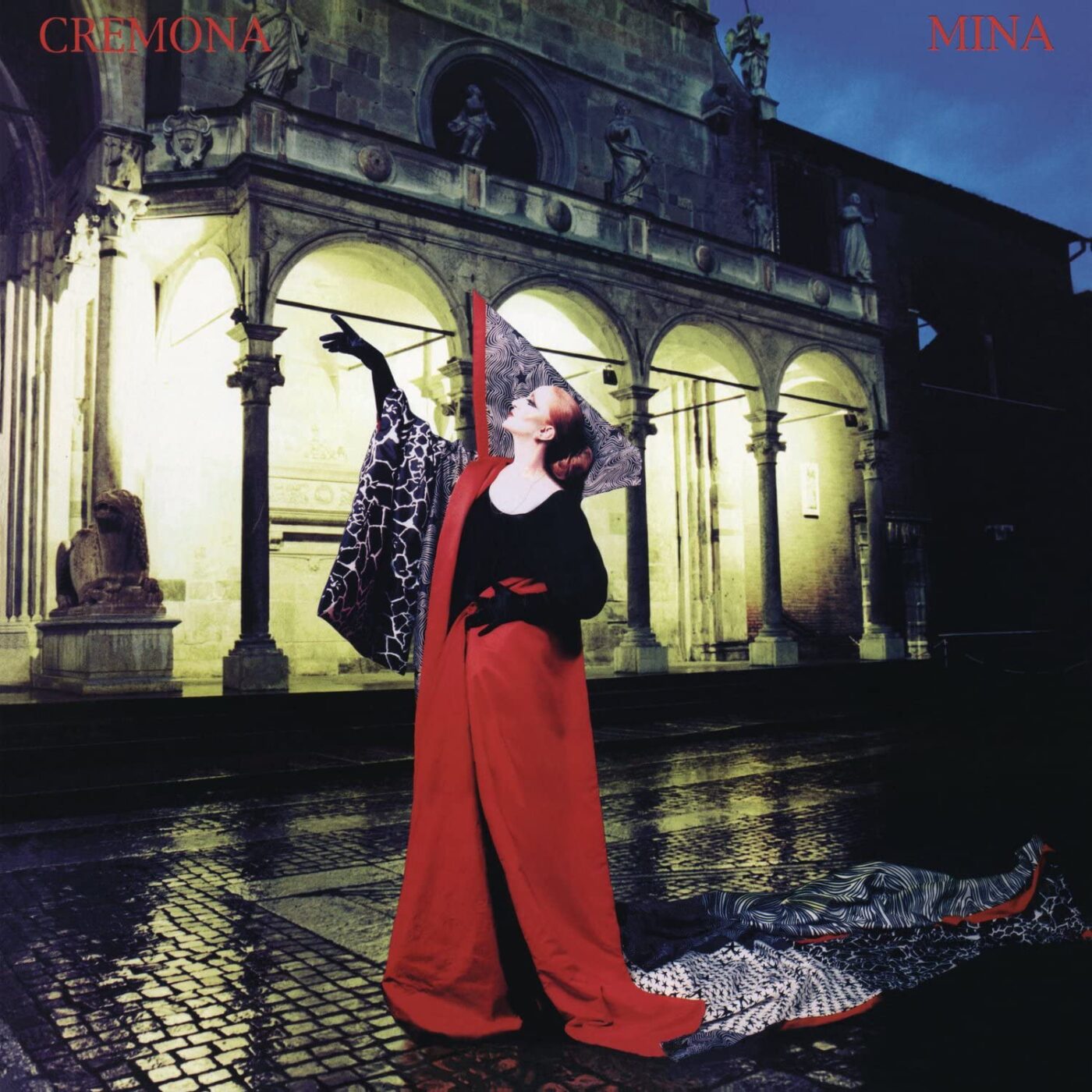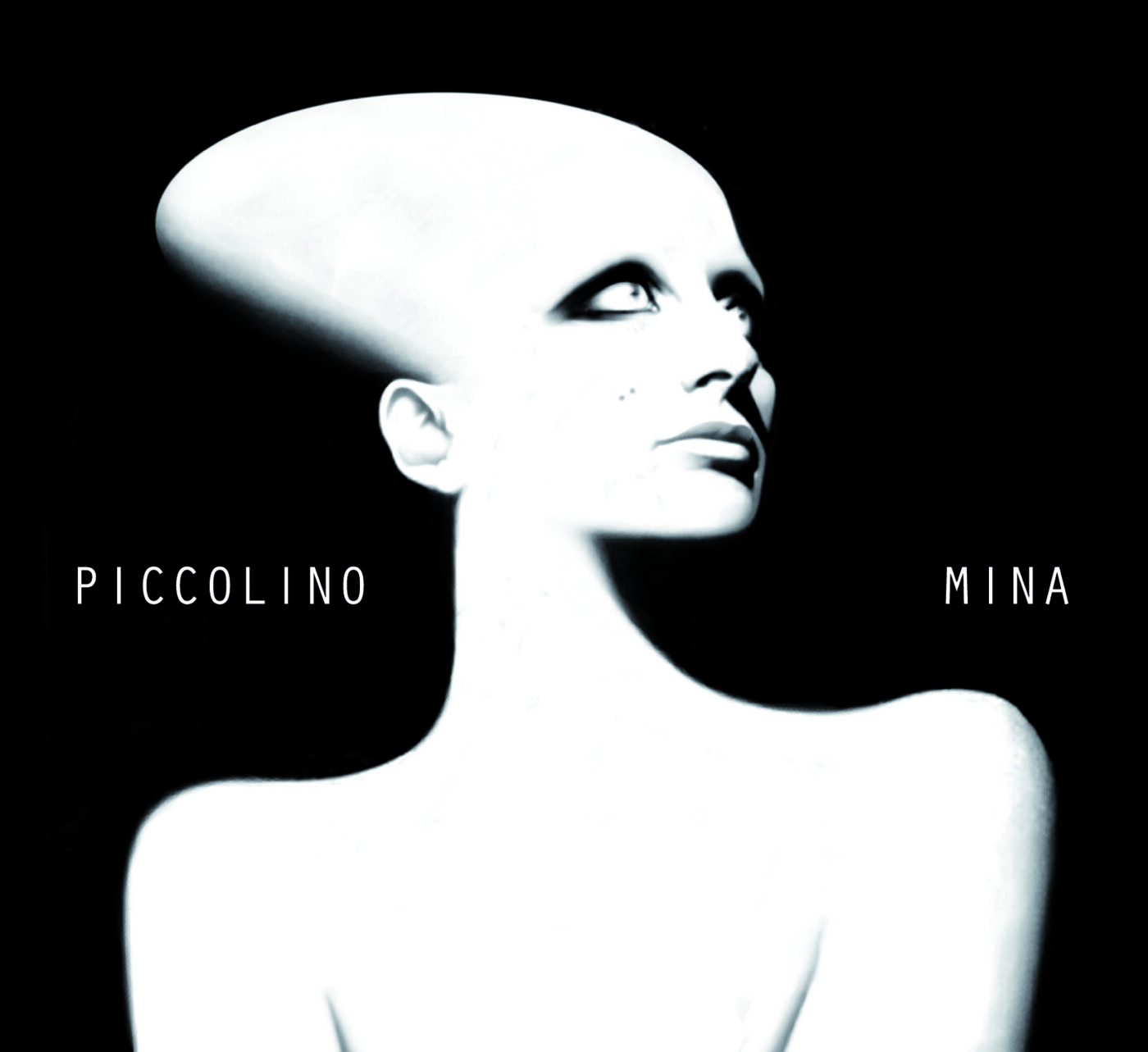An unsettlingly clown-like cake rests precariously atop her head. Her face is superimposed on a track runner’s, racing toward the finish line. A cutout of her profile–dressed in a blue and white checkered shirt and a warrior’s helmet–sits on top of a cookie. Her face, almost metallic now, makes the figurehead of a giant viking-like ship. These are just a few of Mina’s album covers.
Scroll through her website’s page showcasing all 96–yes, 96!–of Mina’s albums, and you’ll be just as wowed (and shocked) by their cover artistry as you will her unmatched vocals. A visionary in just about every way, Mina has continued to defy any definitions or expectations, from her physical appearance to her music to her public image, and there’s no clearer example of this than her vinyl collection.
“If Mina cut her hair one way, the next day, all of Italy would have the same haircut. Her idea with the covers was to challenge the image people had of her–even that she had of herself,” Mina’s grandson, Axel Pani, shares with us. “There’s no real process, just creativity. She gives a stimulus, like saying ‘I want to be a cake.’ There’s no real reason for her idea.”
Under Mina’s expert direction, photographer Mauro Balletti, illustrator Gianni Ronco, and makeup artist Stefano Anselmo collaborated on nearly all of the album covers. “When she finished recording an album, she started seeing the image of that album in her head. The cover, the title, aren’t necessarily linked to the songs,” Pani tells us. “For example, she titled her album Bau (2006) because we were recording from home, and the dog was barking in the garden the entire summer.”
“As early as the ’60s, Mina would go through at least twenty hairstyles and makeup looks in a single year,” Balletti, Mina’s longtime photographer and close friend, told Vogue Italia in an interview in 2018. Vocally, she also refused to stick to one lane, merging from pop and tango to blues, jazz, and more, across even one album. Her album covers and titles follow suit, without any real sense of cohesiveness between themselves or the greater collection–which makes them undeniably Mina.
Here, an in-depth look at 10 of Mina’s most cutting-edge album covers.
You can check out Mina’s full discography here.
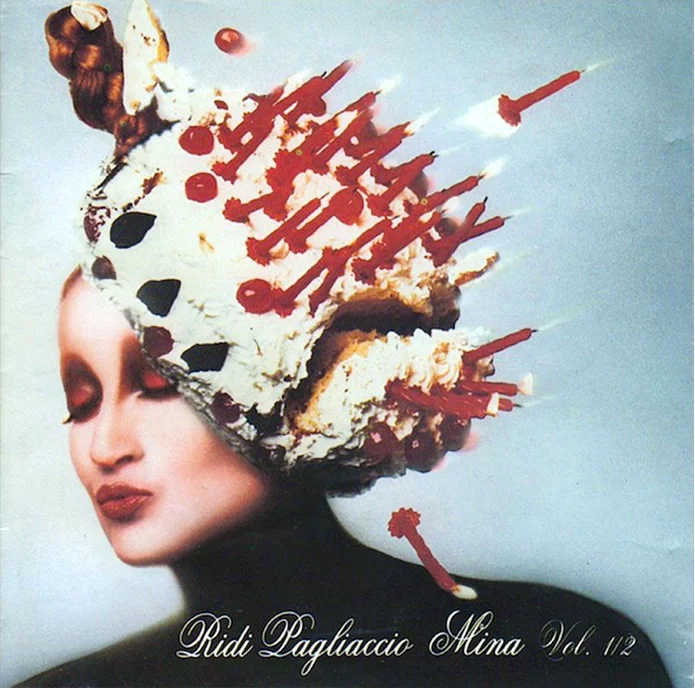
Ridi Pagliaccio 1988 Photo Mauro Balletti ©PDU
Attila (1979)
The first volume of this 1979 album, released by Warner Music, depicts Mina’s severed head resting on a black surface, rainbow color dripping off her lips. “I was indirectly involved in that one,” shared Mina’s makeup artist, Stefano Anselmo, in an interview for Italy Segreta with Valeria Necchio. “It all started from a drawing of mine depicting Mina’s severed, bald head placed on a surface with vanishing lines stretching into infinity.” From this idea, together with illustrator Gianni Ronco, they used a photo of Mina that Balletti took to bring the somewhat-spooky cover to life. The second volume’s cover is similar, with a mannequin-like version of Mina sitting in a chair. When Mina saw the cover of volume one, she gasped, horrifyingly exclaiming, “È terribile… sembra Attila!” (“It’s terrible, it looks like Attila!”). Voilà, the album now had a title.
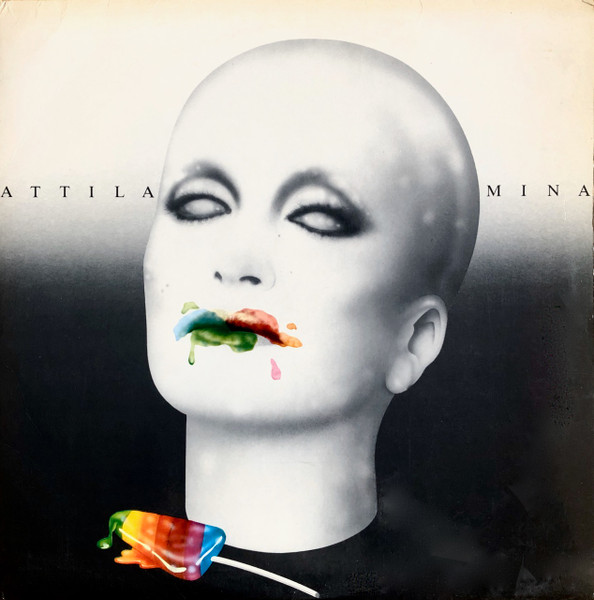
Attila 1979 Photo Mauro Balletti ©PDU
Kyrie (1980)
One year later, Mina released Kyrie as a single 16-track album, which was separated into two volumes in 1992. Mina’s vision for the cover was a hockey goalie, but when they got to the shoot at the ice rink in Como, the kit they rented turned out to be too small for the model player. The solution came in the form of Mina’s son, Massimiliano Pani. “I was around because it was a Saturday. I was on holiday, so I must have been sixteen or seventeen,” he said in an interview with Francesco Dama for Italy Segreta. “[The kit] fit me, so they had me wear it.” Pani’s face is slightly hidden beneath the yellow helmet and face guard, but it’s an easter egg you now know to keep an eye out for.
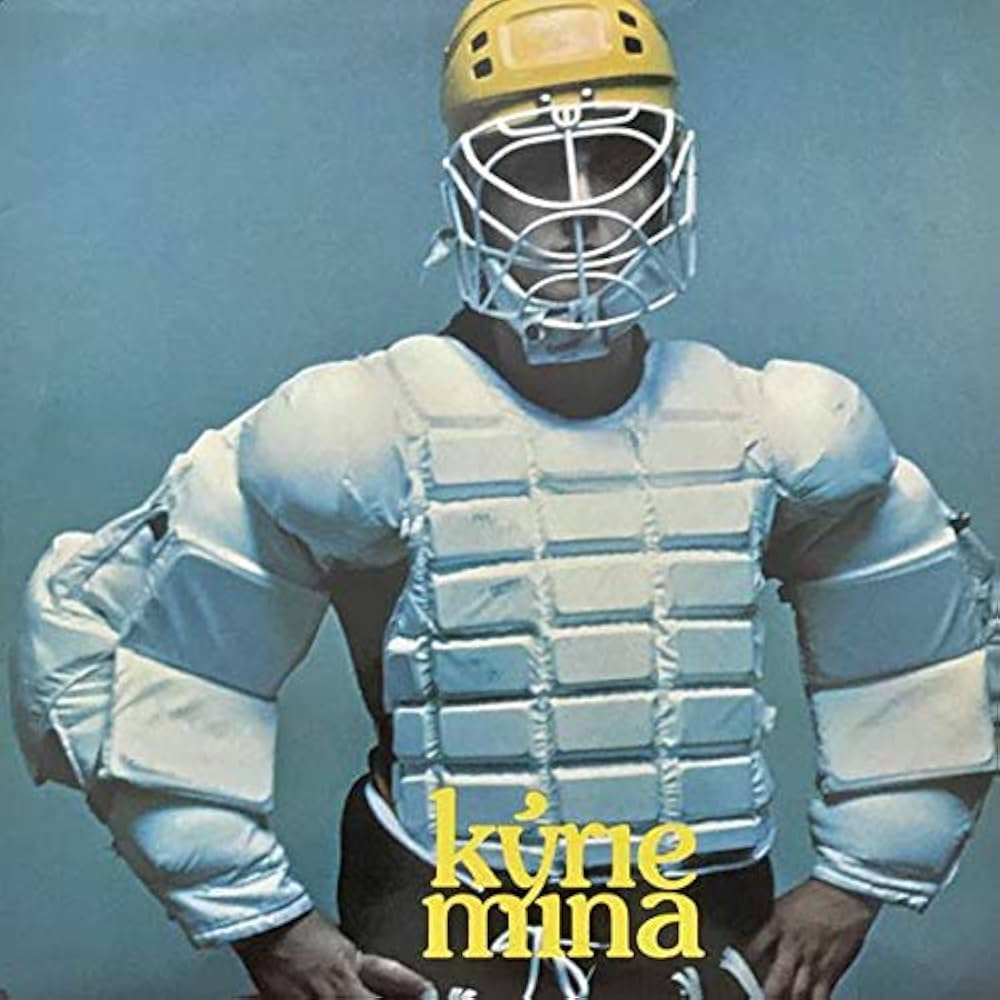
Kyrie 1980 Photo Mauro Balletti ©PDU
Salomé (1981)
“With the two volumes of Salomè from the early ’80s, where she’s shown with Leonardo’s beard, there were those who said that she’d gone mad,” Balletti told Vogue Italia. But true fans of Mina shouldn’t be surprised. The flowing, auburn beard she dons on her 34th studio album–which matches her hair and understated makeup–isn’t a photomontage. Anselmo told Necchio, “It was a fake beard, custom-made based on a hair color sample from Mina by a specialized workshop in Turin, crafted on an invisible tulle base that vanished once applied to her face.” Why the beard? The answer comes in typical Mina fashion: why not?
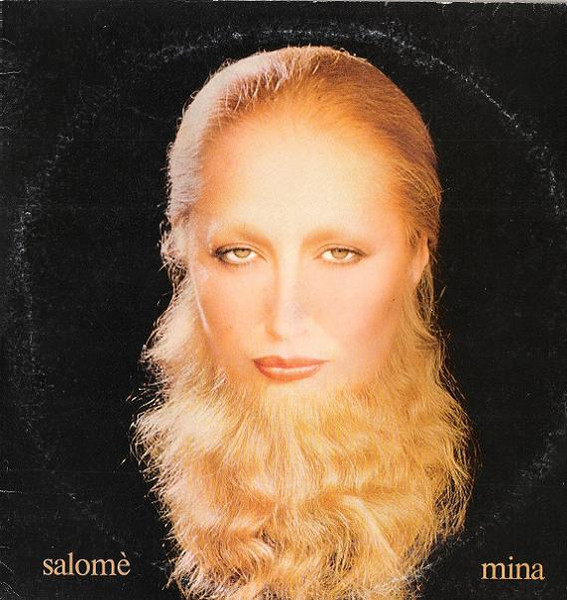
Salomè 1981 Photo Mauro Balletti ©PDU
Del mio meglio n.7 (1983)
Mina’s 7th of her Del mio meglio (My Best) albums–which includes the hit “Ancora, ancora, ancora”–has a striking black-and-white album cover featuring a caricature-like Mina with Cubist-inspired makeup. Perhaps unsurprisingly, the brain behind these bold graphic elements was once again Anselmo, who claims that this cover is actually one of his favorites. Anselmo’s makeup look was entirely influenced by Picasso, turning Mina’s face into a 2D painting with dramatic eyeliner elongating her eyes and eyeshadow carving harsh lines into the creases. Anselmo also plays with her eyebrows here, removing them to render her expressionless.

Del mio meglio n.7 1983 Photo Mauro Balletti ©PDU
Catene (1984)
Catene (Chains) is one of the rare album covers from that era where Mina is clearly recognizable–but not without dramatization, of course. Her two not-quite-identical faces appear side by side, with dark black eyeshadow, missing eyebrows, thick contour, and slicked back hair. Very chiaroscuro. “The reference was to dramatic cinema just after the silent film era,” Anselmo told Necchio. He, once again, did her makeup for the shoot. “The photos were taken [by Mauro Balletti] in Mina’s kitchen, using light from the window. The background? That was me holding up my open black coat!”

Catene 1984 Photo Mauro Balletti ©PDU
Rane Supreme (1987)
Perhaps there’s no album cover as memorable as the 18-track, two-disc Rane Supreme (Supreme Frogs): Mina’s head superimposed onto the naked body of a male bodybuilder. “The scandal it provoked was anything but deliberate,” Balletti shared in an interview with Vogue Italia. “Madonna’s nudes were intentionally scandalous; with Mina, we’re still within the confines of astonishment.” Mina’s face, turned sharply to the side, is slightly hidden behind a mask, and her braided hair falls down the bodybuilder’s back. This ingenious image is the work of Mauro Balletti, who photographed both the bodybuilder and Mina’s profile separately, then adjusted the proportions, reassembled them, and used spray paint to cover up the divide at the neck. He rephotographed the final product as if it was a single person. “Today, you do that in three seconds. Balletti worked on it for weeks,” Pani told Dama in his interview for Italy Segreta.
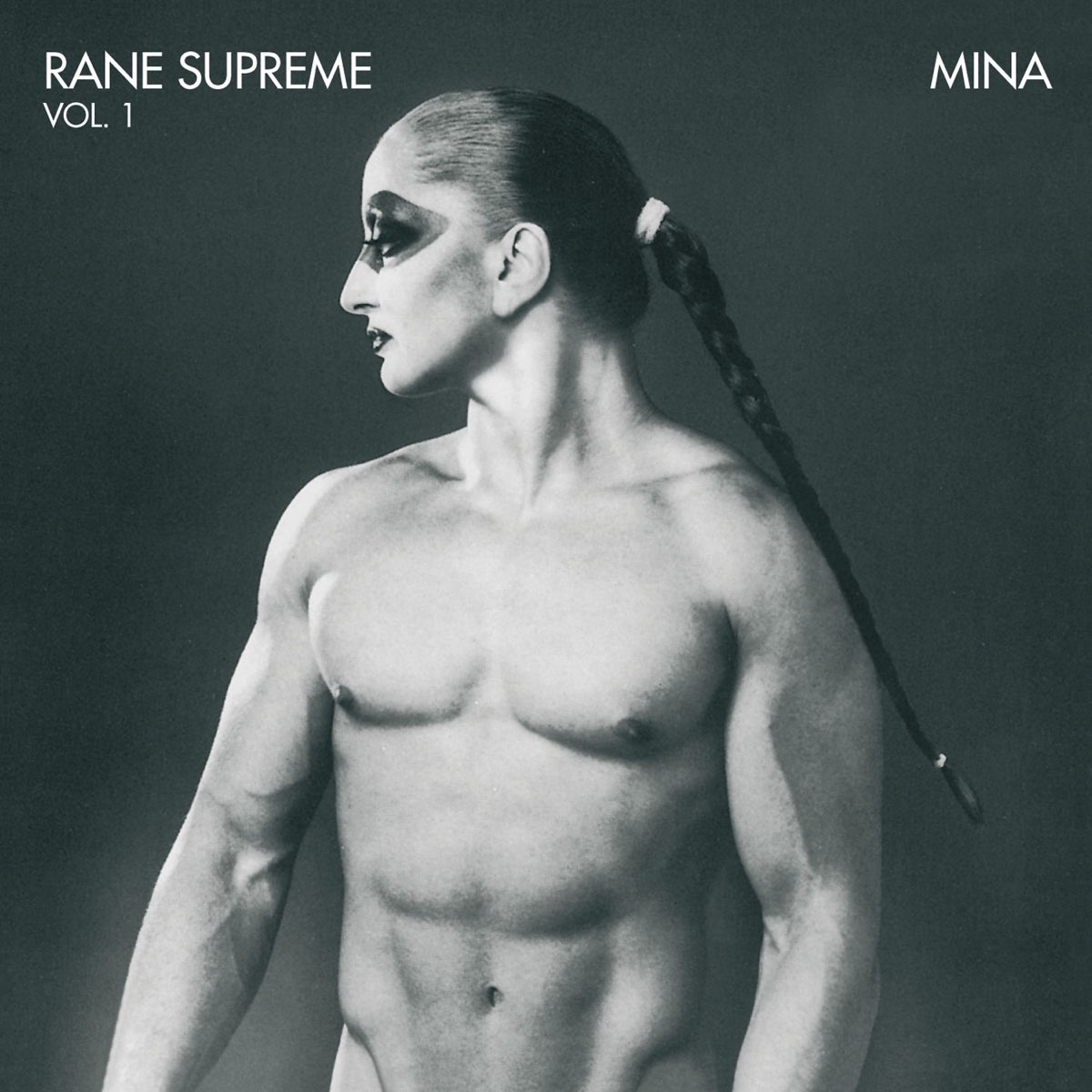
Rane Supreme 1987 Photo Mauro Balletti ©PDU
Cremona (1996)
The 10-track Cremona, titled after the city where she grew up, was Mina’s first non-double album since 1979. Elegant, but still a tad absurd, this cover features Mina dressed in a long gown designed by Gianni Versace–“what he called the realization of one of her dreams,” according to Anselmo–her profile turned to her right as she looks up at her raised hand, covered in a long black glove. Gracefully posed in front of the majestic Torrazzo of Cremona, Mina was photographed in a studio and superimposed onto the image of the city. In the article “Mina, la tigre non smette di ruggire”, published in Il Giornale on September 18th, 1996, Cesare G. Romana discusses this album, saying “it is merely a pretext for an unusual cover featuring Mina, slimmed down and self-ironic, […] draped in a Versace dress that is just absurd enough—somewhere between a cardinal’s attire and the regal cloak of Grimhilde, Snow White’s wicked stepmother.” The collar of her dress almost comically stands straight up. “To keep that collar up? That was also me! Balletti later made my hand disappear in Photoshop,” Anselmo shared with Necchio.
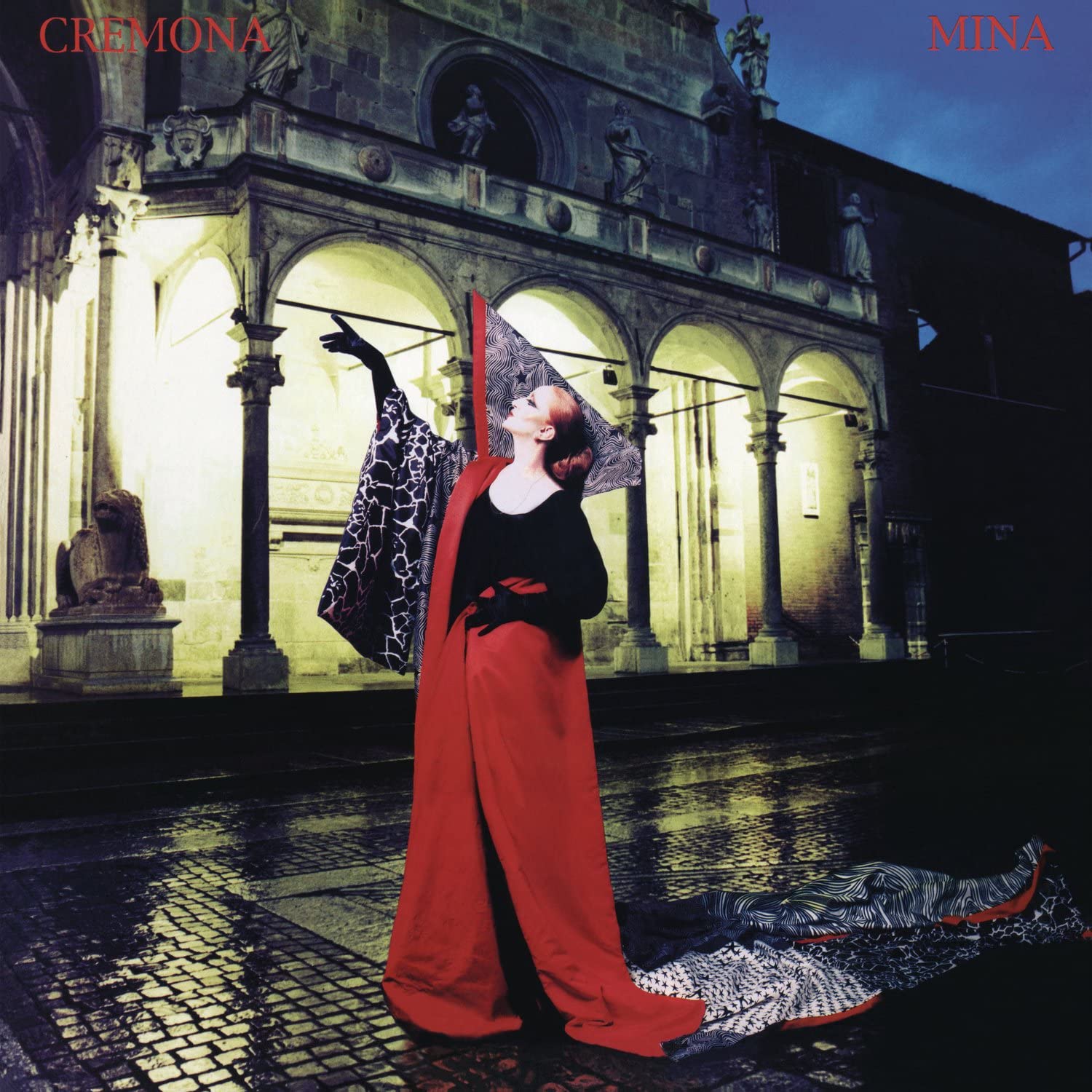
Cremona 1996 Photo Mauro Balletti ©PDU
Olio (1999)
A surprise album released in the spring of 1999 (previously, Mina had exclusively released albums in the fall), the 10-track Olio features a Mona-Lisa-esque version of Mina on the cover. “This is one of the covers I enjoyed working on the most,” Anselmo shared with Necchio, responsible for creating the now-iconic makeup look. Though the shading, dramatic chiaroscuro, and overall look was designed to match the original painting, “it was more natural makeup than usual, and Mina felt strange seeing herself like that—she was already used to having dramatic eyes,” he said. Mauro Balletti created a clever photomontage, adding the saturation and craquelure effects digitally, making Mina look like the pieced-together twin of the Mona Lisa. In fact, the original CD release actually came with an extra cardboard cover that contained a puzzle of the front cover.
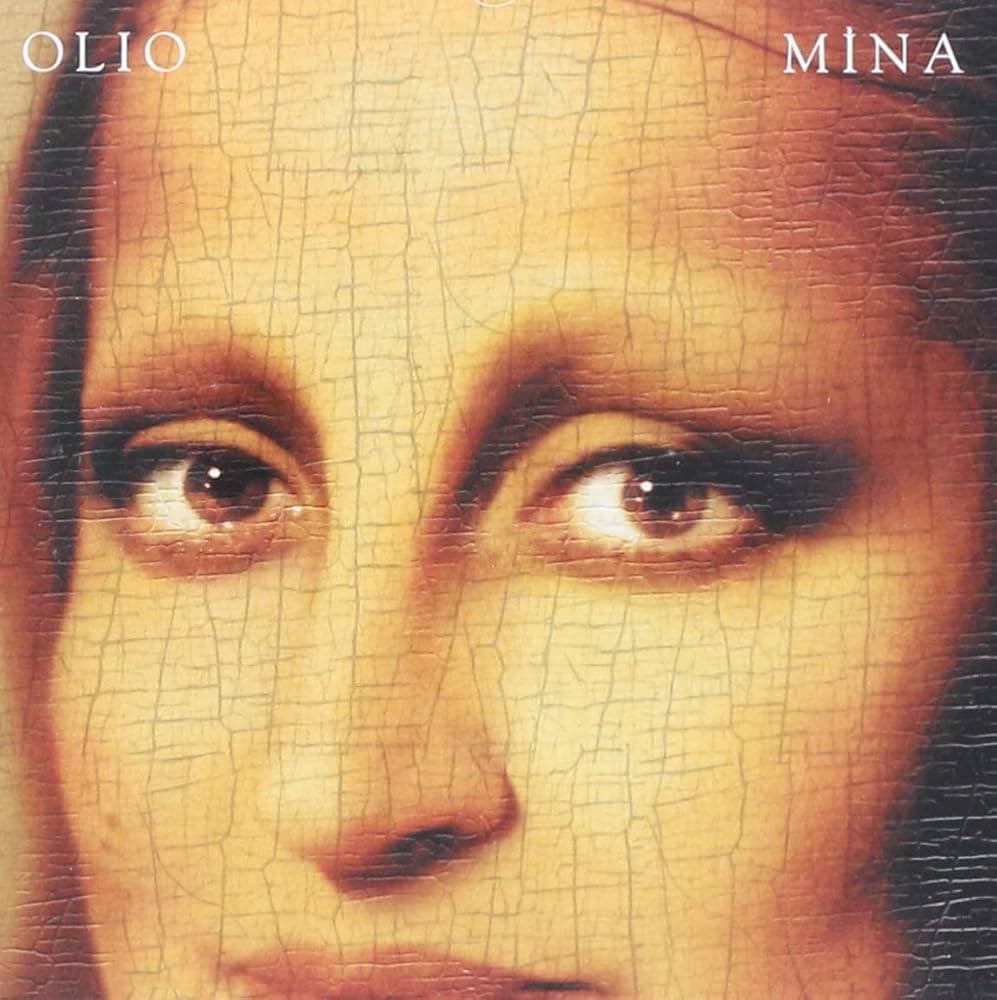
Mina as the Mona Lisa on the cover of Olio 1999 Photo Mauro Balletti ©PDU
Piccolino (2011)
Released on November 22nd, 2011, Piccolino (Little One) has two editions: a standard with 10 tracks and a deluxe with four bonus tracks, mixing pop, blues, electro dance, and techno salsa genres. An album that’s as out of this world as this one deserves a matching cover: this time, Mina becomes an alien thanks to the genius of graphic designer, Gianni Ronco, whose collaboration with Mina spans 30 years. Mina’s elongated, bald head and thin, curved neck are stark white against a black backdrop. Balletti directed the futuristic, avant-garde aesthetic that laid the foundation for Mina’s 2018 Sanremo performance. Fifty-seven years after her last appearance, she “took the stage”, singing “Another Day of Sun” from La La Land, as a 3D alien hologram. Iconic.
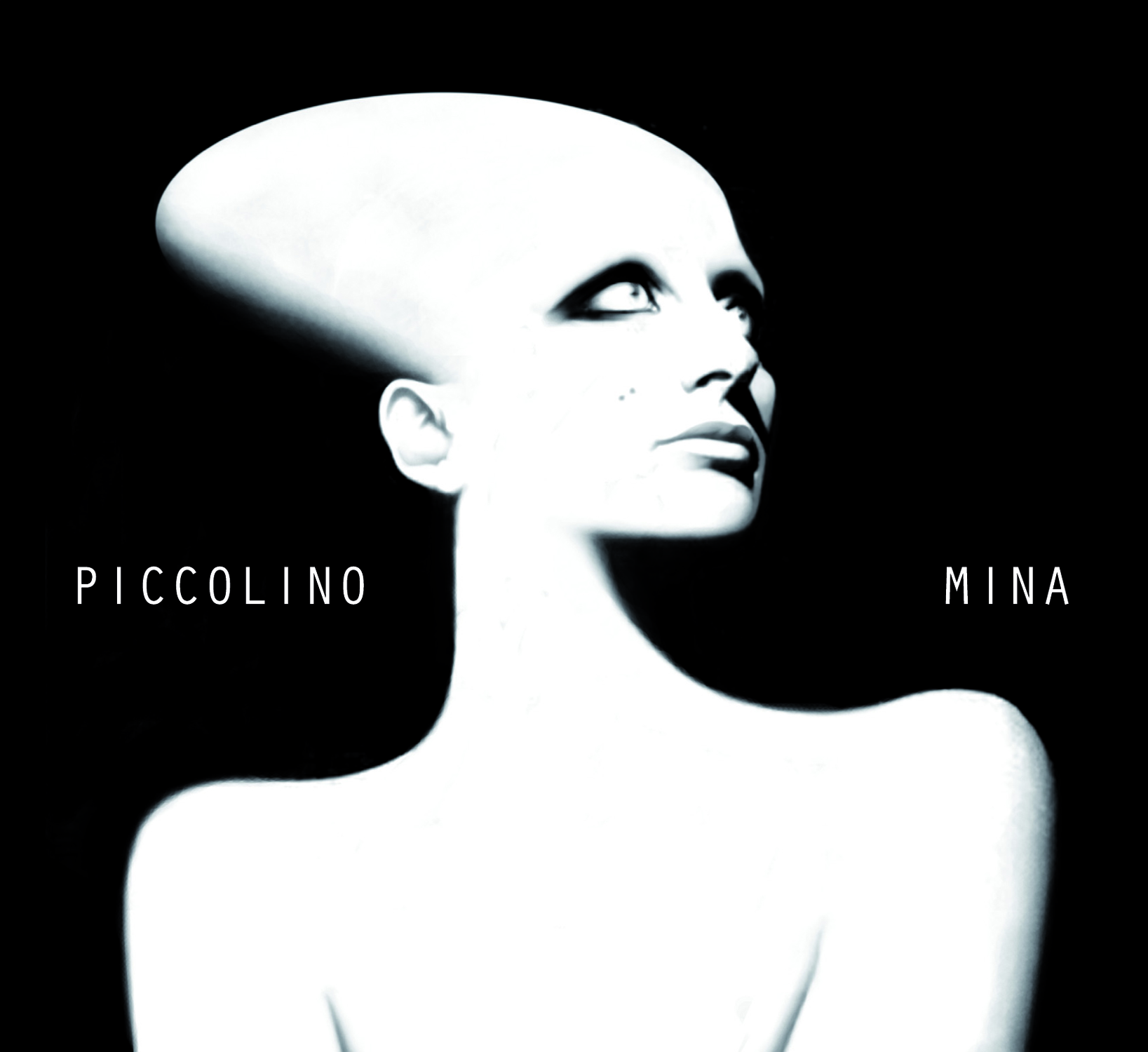
Piccolino 2011 Photo Mauro Balletti ©PDU
Christmas Song Book (2013)
Mina’s 12-track Christmas album–her only, with covers of classic Christmas songs, from “I’ll Be Home for Christmas” to “White Christmas”–was so popular that it was certified platinum by the Federazione Industria Musicale Italiana. This graphic cover comes courtesy of the magnificent Giorgio Cavazzano, an Italian cartoonist and one of the most famous Disney comics artists in the world. On the cover, classic characters including Donald Duck and Goofy form the band in front of which Mina, transformed into Mina Duck, sings. Her signature slicked back auburn hair falls in a thick braid down the back of her red form-fitting dress. Previously, a similar design was used for the 1998 album Mina Celentano. The album was released in three formats: a CD with a book containing 18 pages of illustrations, song descriptions, and a letter from Mina to the listeners; a CD with a book containing 248 pages of Disney Christmas stories; and an LP (limited edition), including a color vinyl record and 12 large-format illustrations by Cavazzano.

Christmas Song Book 2013 Drawing Giorgio Cavazzano ©Disney

